- What are the desert animals?
- The camels
- Scorpions
- Rattlesnake
- The Dingo Dog
- The ostrich of the Sahara
- The coyote
- Characteristics of desert animals
- Examples of hot desert animals
We explain everything about the animals that live in the desert, some examples and the main characteristics of these animals.
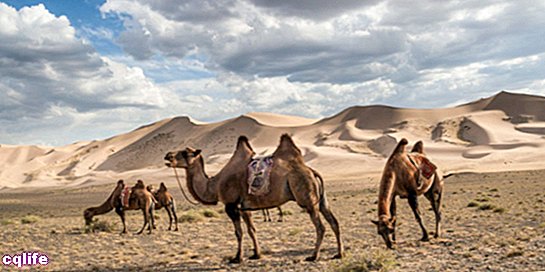
What are the desert animals?
The deserts are quite common ecoregions in our planet, which can occur in climates warm (hot deserts) and cold (frozen deserts), characterized by its brutal shortage of humidity. In them the rains are very occasional or nil, and the I usually therefore it is arid, dry, hard. This does not, however, prevent the existence of fauna and FloraIn other words, desert plants and animals adapted to such harsh conditions of existence.
Contrary to what was once thought, desert animals are not rare, although they are not very diverse, especially when compared with the enormous variety of creatures that inhabit other regions like the jungles Y woods. This is because desert vegetation has few water resources to abound, so it grows at a slower rate, generally without foliage, thus providing few opportunities for animals to, among other things, protect yourself from sunlight and the wind, the latter being an important source of erosion.
Desert animals are part of the amazing fauna of our planet and suffer from the effects of climate change and the pollution as much as any other living being from any other habitat, since over millions of years they have adapted to current living conditions. This despite the fact that in deserts, luckily for them, human life is truly scarce.
The camels
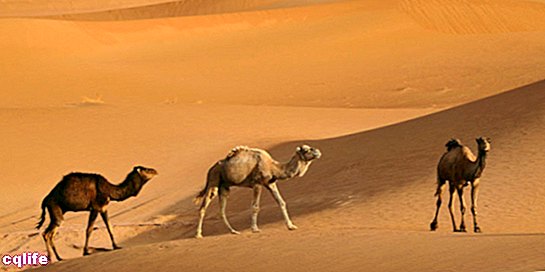
Camels are iconic animals of the desert habitat. They are very well adapted to the harsh living conditions of these spaces, they can take at once about 180 liters of Water, and then go up to 10 days without tasting a drop.
They have a characteristic hump in the middle of the back, which can be simple (dromedary) or double (Bactrian camel). This hump, contrary to popular belief, is not a reserve of water, but of essential fats to maintain body energy. It is an animal designed to withstand long walks, which is why it was used as a beast of burden by the inhabitants of the Saharan desert and its surroundings.
Scorpions

The food chain in deserts is much more desperate than in other habitats, since there are not many species and the predators they don't usually get second chances. For this reason, hunters such as scorpions have evolved to surprise their prey and inject their venom with the stinger they have on their tail, or by holding them with the robust front pincers that they have. These arachnids abound in the biome desert, among which are some of the most poisonous species known.
Rattlesnake
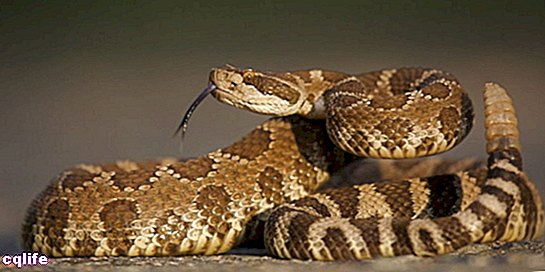
Frequent in American desert climates, although its preferred habitat is coastal and forest, this snake is well known for the sound that it produces with its tail, at the end of which it has a rattle, from which its name comes.
In a environment auspicious, a rattlesnake can grow up to 2.5 meters long and 4 kg in weight. Its potent hemotoxic venom is the most dangerous of all North American snakes.
The Dingo Dog
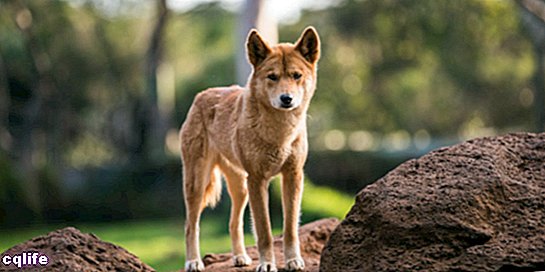
This type of North Australian canid is a real threat to children and women. domestic species, since despite being a desert inhabitant, it tends to approach urban areas in search of food.
It is a subspecies of wolf, with yellowish fur and characteristics similar to modern dogs. Most of their lives are lived alone, but from time to time herds are formed whose purpose is to socialize and reproduce.
The ostrich of the Sahara

Also known as the red-necked ostrich, it is a common inhabitant of the steppes and the deserts of northern Africa. It is the most robust of all the ostrich subspecies, the one that best supports the absence of water and the one that can run the fastest.
Its name comes from the pinkish coloration of its neck and legs, but the rest of its coat is black with white trim on the tips of the wings. It is, however, an animal critically threatened with extinction, of which only a few copies remain.
The coyote
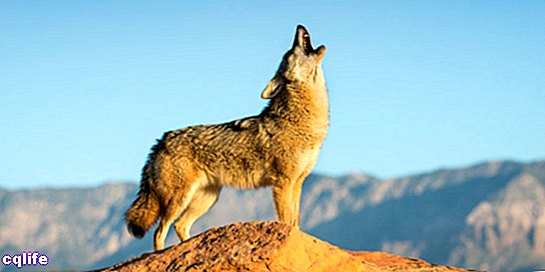
Famous for its appearance in cartoons, the coyote is a predatory canid of the deserts of North America, as well as Central America.
Coyotes are particularly solitary animals, they live for about 6 years and have gray fur that covers a particularly slender body, which at first glance appears to be malnourished. However, its diet is omnivorous, being able to eat fruits, carrion, small species, garbage and small insects.
Characteristics of desert animals
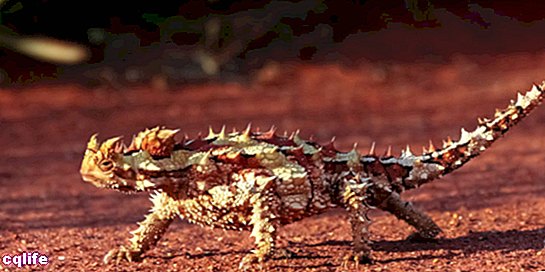
Desert animals have developed over millions of years from evolution various physical, biochemical or behavioral capacities that allow them to survive and reproduce in a habitat as challenging as the desert. It is, as said, little varied and little abundant compared to other terrestrial ecosystems, and consists mainly of insects, arachnids, reptiles, birds and some mammals, generally small.
Many of these animals have nocturnal habits, when the sun goes down and the temperatures they drop considerably. For this reason they hide during the day, within the most abundant vegetation (cacti and bushes) or under the sand itself, seeking the freshness of the depths. It is also usual that they have insulating layers to protect themselves from the sun and desiccation, or reserves of Water in various bodily organs to go long periods without drinking.
Given the low abundance of organic material, the predominance of carnivorous animals and scavengers; and in the case of herbivores, nomadic herds, wandering.
Examples of hot desert animals
Below is a list of the animals of the hot desert:
- Bactrian camelCamelus bactrianus)
- Dromedary (Camelus dromedarius)
- Red-necked ostrich (Struthio camelus camelus)
- Roadrunner birdGeococcyx californianus)
- African dorcas gazelle (Gazella dorcas)
- Coyote (Canis latrans)
- Australian dingo (Canis lupus dingo)
- American black vulture (Coragyps atratus)
- Adax (Addax nasomaculatus)
- Fat-tailed scorpion (Androctonus australis)
- Yellow Palestinian scorpion (Leiurus quinquestriatus)
- Emperor scorpion (Pandinus imperator)
- Armadillo lizardOuroborus cataphractus)
- Thorny devilMoloch horridus)
- Mojave desert tortoise (Gopherus agassizii)
- Mojave rattlesnake (Crotalus scutulatus)
- Egyptian cobra (Naja haje)
- Camel spider (Gluvia dorsalis)
- Common vulture (Aegypius monachus)
- Desert Woodpecker (Melanerpes uropygialis)
- Desert rattleCampylorhynchus brunneicapillus)
- Sonoran Owl (Tyto alba)
- Pharaoh Owl (Bubo ascalaphus)
- Western desert tarantula (Aphonopelma chalcodes)
- Namibian beetle (Stenocara gracilipes)
- Tarantula hunting wasp (Pepsis formosa)
- Northern bat (Eptesicus nilsonii)
- Red kangaroo (Macropus rufus)
- Desert iguanaDorsal dipsosaurus)
- Cougar or American lion (Puma condonor)
- Desert ratPsammomys obesus)
- Antelope hareLepus alleni)
- Long-eared foxOtocyon megalotis)
- Fennec (Vulpes zerda)
- Cape fox (Vulpes chama)
- Laucha salinera (Salinomys delicatus)
In the case of frozen deserts or polar deserts, the fauna is much more scarce, and tends to live in the regions close to the sea.
